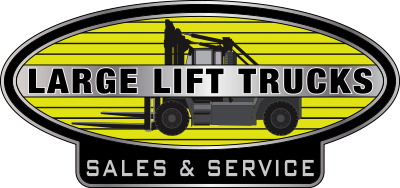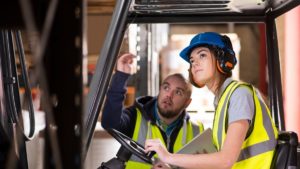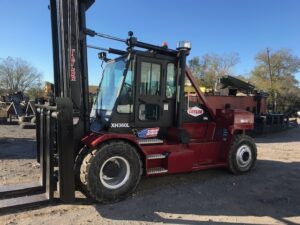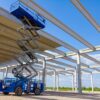What is a Warehouse Forklift? Where to buy it for the construction site?
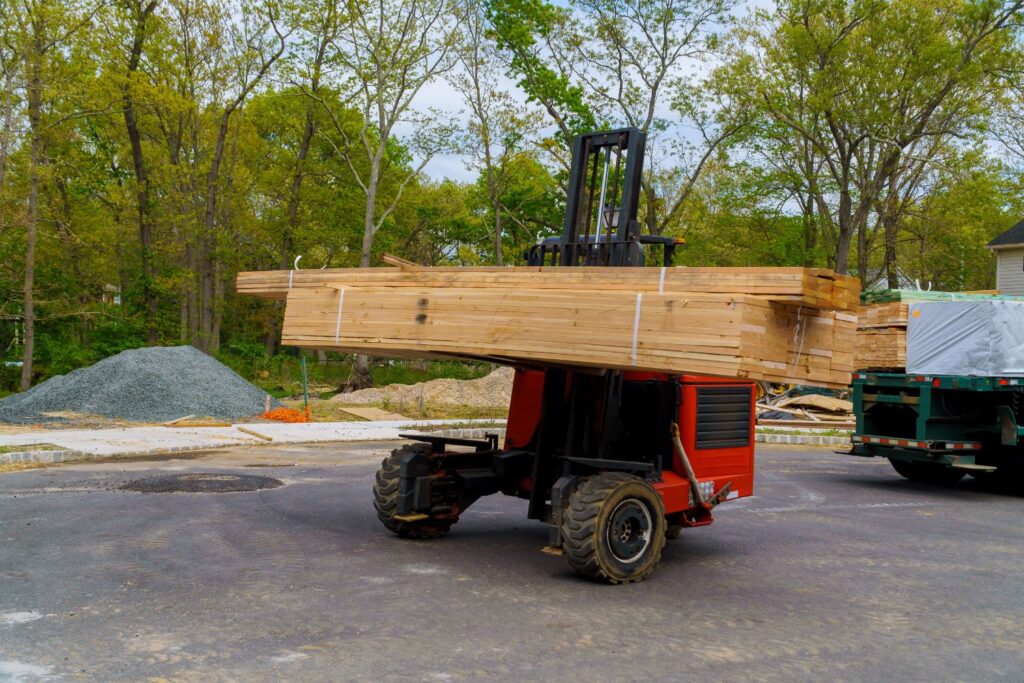
Without forklifts, the logistics and warehouse industries cannot function properly. Commodities are frequently loaded and unloaded from warehouses using forklifts. Warehouses are mostly used to store raw materials, packing materials, spare parts, components, and commodities from manufacturing companies, agriculture businesses, etc. In this case, forklifts are crucial to the logistics of transportation inside the warehouse. Their purpose is to load and unload cargo from vehicles, railroads, seaports, airports, and so on.
What is a Warehouse Forklift?
When most people hear the phrase forklift, they usually picture warehouse forklifts. Common warehouse tasks that forklifts are used for include stacking products, moving supplies, lifting personnel and equipment, and stocking orders.
The most popular kind of lift truck is the warehouse forklift. It looks like a golf buggy with two front forks sticking out. This forklift machine is mostly used at facilities with a large inventory as it can handle loading, unloading and moving goods to and from delivery trucks. The majority of warehouse forklifts are made to support loads up to 5,000 pounds on average, with certain heavy-duty versions having a payload capacity of up to 20,000 pounds.
Types of Forklifts Used in Warehouses
Among the various types of forklifts, counterbalance and side loader forklift machines are mostly used in the warehousing industry.
Counterbalance Forklifts
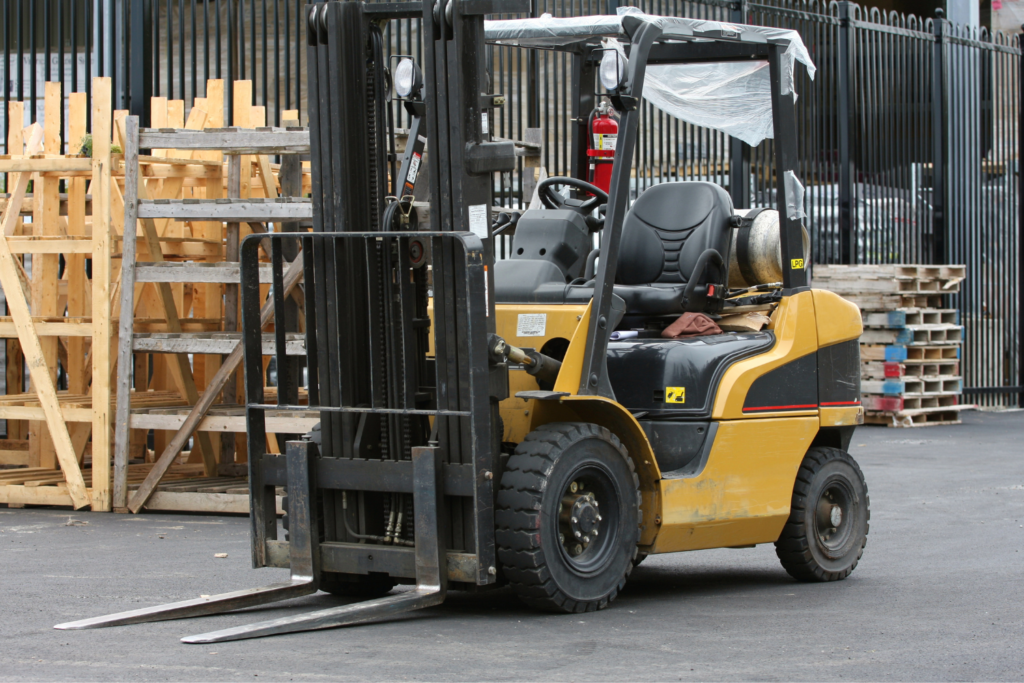
The majority of warehouse forklifts are made for usage in such environments and are variations on counterbalances. The heavier loads raised by the hydraulic forks and pistons will be countered by a counterweight at the back of the vehicle. Knowing the carrying capacity is crucial because some construction forklifts are limited to lifting 5,000 pounds.
The machine would tip over and injure the driver or the vehicle itself if this was surpassed because the counterweight wouldn’t function. An electric forklift can be purchased in place of a diesel or gasoline-powered one, although it usually has a smaller counterweight and less efficiency.
See related: What are scissor lifts?
Side Loader Forklifts
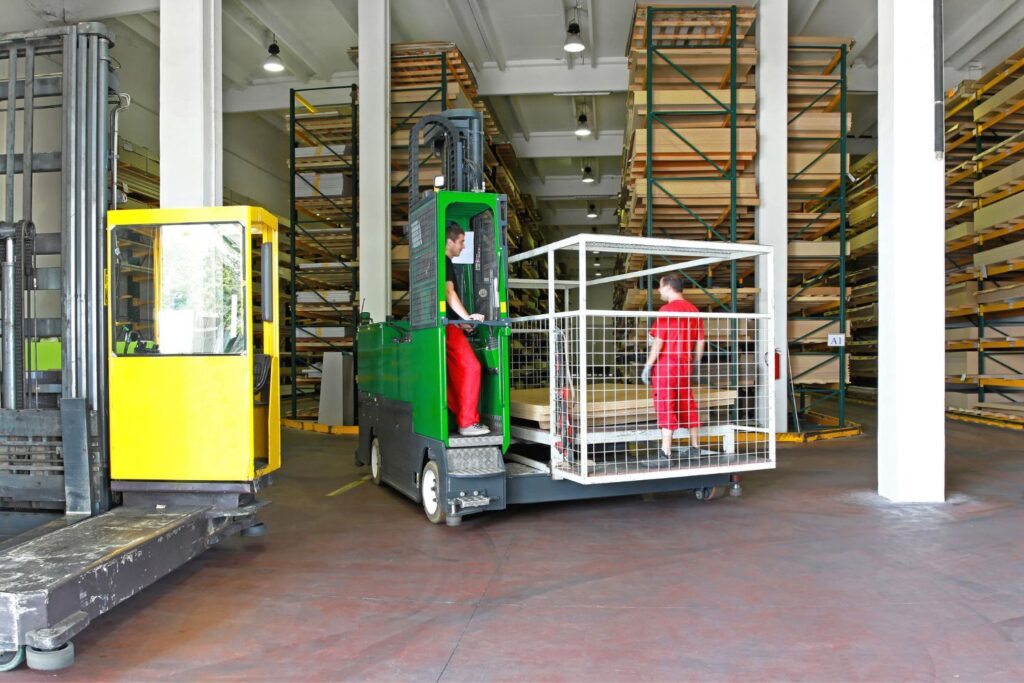
A Side loader, which functions similarly to the standard form but has prongs on the side of the vehicle rather than the front, is another popular forklift seen in warehouse settings. When side loaders are used indoors, the operator can stand, while the outside ones have an enclosed cab.
These types are useful for warehouses with tight aisles since they are excellent at hauling loads without requiring a turn to move along an aisle. Although they are less maneuverable than other versions, side loaders are nevertheless quite good for moving metal, pipes, and wood throughout warehouses.
Forklift Fuel Types
There are numerous choices available for forklift fuel types. While several forklifts use different power sources, they all perform the same job. Your needs and work environment will determine the kind of equipment you select.
Electric Forklifts
Electric forklifts use a rechargeable battery. The price of this battery alone may reach $2,500. For this reason, the initial cost of electric forklifts is typically higher than that of IC models. But during their lifetime, these forklifts are less expensive. This is because they have no fuel expenses and negligible repair and maintenance expenditures.
The primary benefit of forklifts is their lack of hazardous emissions. This is excellent for indoor air quality as well as the environment. Electric forklifts require less maintenance, are more ergonomic, and are quieter. They require more time to refill, though, and are initially more expensive. It can take up to eight hours to charge batteries and then another eight hours to cool down.
Internal Combustion Forklifts
Internal combustion forklifts, as opposed to electric variants, require fuel to operate. Forklifts with this engine type are the most common and use gas, diesel, and propane as fuel. Although these forklifts are less expensive initially, they end up costing more in the long run. Fuel, upkeep, and repairs are all costs.
Forklifts with internal combustion engines are adaptable and suitable for both indoor and outdoor use. Internal combustion forklifts release carbon monoxide and thus have to be managed if they are utilized indoors. Additionally, refueling internal combustion forklifts is simpler. In as little as five minutes, fill up your tank.
Grab Your Forklift For Warehouses from Large Lift Trucks
Forklifts are useful tools on any job site because of their capacity to lift and move goods of different sizes. Therefore, in addition to a trustworthy equipment rental provider, you also need a forklift for the task at hand. Large Lift Trucks offers a wide range of forklift trucks for your heavy jobs. Whether you want to buy or rent new or used warehouse forklifts, Large Lift Trucks is your one-stop solution.
Common Questions About Warehouse Forklifts
What size forklift is used in a warehouse?
A conventional warehouse forklift with a weight capacity of 5,000 pounds typically measures five feet wide, seven feet tall, and ten feet long (with standard forks). When selecting a forklift size, there are other crucial dimensions to be aware of in addition to these.
Name some popular models of warehouse forklifts.
The Toyota 3-Wheel Electric Forklift, Hyster 36-38T and Komatsu 20 BX50 Hyster are a few of the most well-liked warehouse forklift models.
What are the leading brands of warehouse forklift trucks on the market?
JCB, CAT, and Godrej are the three most well-known brands of warehouse forklift trucks.
What is the advantage of using warehouse forklifts?
Warehouse forklifts lower the possibility of worker injuries because they are made to lift and move large weights safely. Forklifts also have the benefit of lowering labor expenses.
Where can I buy warehouse forklifts for the construction site?
Large Lift Trucks is a reliable stop for buying new or used warehouse forklifts.
What is the price of warehouse forklift equipment?
The price of a construction site forklift ranges from $25,000 to $1,00,000.
How does a forklift machine work?
Conventional forklifts counterbalance, or offset, the weight of a load carried in the front of the truck by using a counterweight at the back of the vehicle. Because they use the weight of the battery as a counterweight, electric-powered forklifts are usually lower in size.
How does a forklift machine help expand a business?
With the aid of forklifts, more inventory can be moved faster and with fewer laborers. For companies aiming to develop and broaden their activities, forklifts may hold the secret to propelling your enterprise to new heights.
